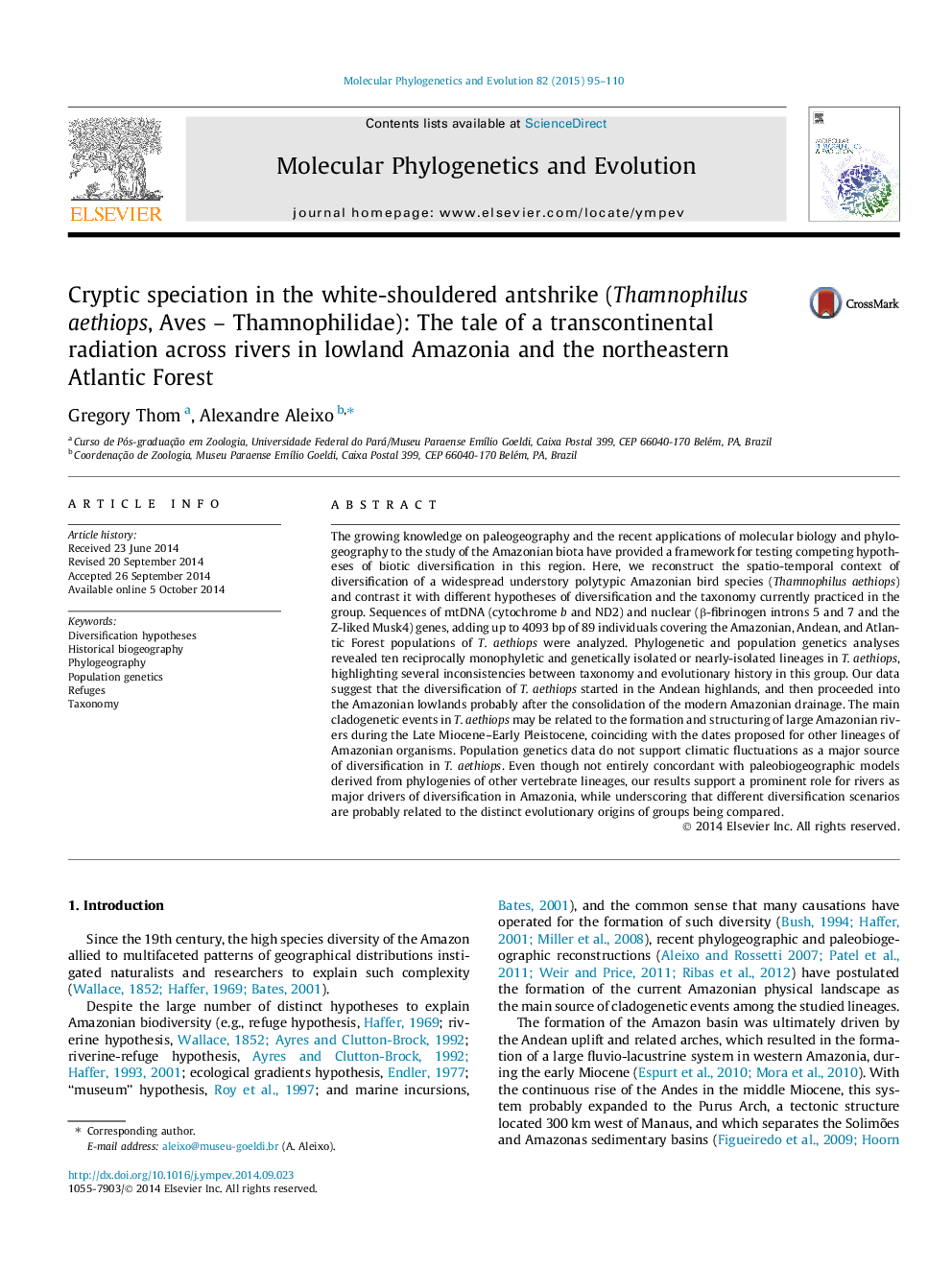| کد مقاله | کد نشریه | سال انتشار | مقاله انگلیسی | نسخه تمام متن |
|---|---|---|---|---|
| 5919014 | 1164256 | 2015 | 16 صفحه PDF | دانلود رایگان |

- Nine lineages were recovered in T. aethiops corresponding to evolutionary species.
- Diversification started in the Andes, and proceeded into the lowlands.
- Differentiation in the lowlands is related to modern drainage structuring.
- Parapatric lineages in contact exhibit signs of reproductive isolation.
- Climatic fluctuations are not a major source of diversification in T. aethiops.
The growing knowledge on paleogeography and the recent applications of molecular biology and phylogeography to the study of the Amazonian biota have provided a framework for testing competing hypotheses of biotic diversification in this region. Here, we reconstruct the spatio-temporal context of diversification of a widespread understory polytypic Amazonian bird species (Thamnophilus aethiops) and contrast it with different hypotheses of diversification and the taxonomy currently practiced in the group. Sequences of mtDNA (cytochrome b and ND2) and nuclear (β-fibrinogen introns 5 and 7 and the Z-liked Musk4) genes, adding up to 4093 bp of 89 individuals covering the Amazonian, Andean, and Atlantic Forest populations of T. aethiops were analyzed. Phylogenetic and population genetics analyses revealed ten reciprocally monophyletic and genetically isolated or nearly-isolated lineages in T. aethiops, highlighting several inconsistencies between taxonomy and evolutionary history in this group. Our data suggest that the diversification of T. aethiops started in the Andean highlands, and then proceeded into the Amazonian lowlands probably after the consolidation of the modern Amazonian drainage. The main cladogenetic events in T. aethiops may be related to the formation and structuring of large Amazonian rivers during the Late Miocene-Early Pleistocene, coinciding with the dates proposed for other lineages of Amazonian organisms. Population genetics data do not support climatic fluctuations as a major source of diversification in T. aethiops. Even though not entirely concordant with paleobiogeographic models derived from phylogenies of other vertebrate lineages, our results support a prominent role for rivers as major drivers of diversification in Amazonia, while underscoring that different diversification scenarios are probably related to the distinct evolutionary origins of groups being compared.
Journal: Molecular Phylogenetics and Evolution - Volume 82, Part A, January 2015, Pages 95-110